West Palm Beach hopes to tap Floridan Aquifer for water source as population grows
The burgeoning City of West Palm Beach wants to tap the brackish Floridan Aquifer with 30 wells to supplement its vulnerable surface water supply in a move that would require building an expensive desalinization plant.
An application to the South Florida Water Management District is asking for a 50-year permit to draw from the 1,500-foot-deep source of salty but stable groundwater as the city’s population swells and following a 2021 harmful algae bloom in Clear Lake, the main source of drinking water for West Palm Beach, Palm Beach and South Palm Beach.
Approximately 130,000 customers are served by West Palm Beach's water treatment plant. Officials expect that to increase by 25% in 30 years and by 35% in 50 years to about 175,800 people, according to the application initially submitted in September and amended this month.
City officials said they don’t know yet how much a reverse osmosis or desalinization system would cost to purge salts from the aquifer water. The project also would require the drilling of wells, new pipeline infrastructure and disposal capacity ― usually 3,000-foot deep injection wells — for the contaminants leached from the water.
“If we are permitted an allocation from the Floridan Aquifer, we will then engage appropriate professionals to provide cost estimates, phasing and specific treatment techniques,” the city said in a statement. “The exact type of treatment will be decided after testing and studies to determine the best approach to treating the water.”
While there is no current cost estimate, the city’s application acknowledges that using aquifer water will have “significant economic impacts and challenges to the city and its customers.”
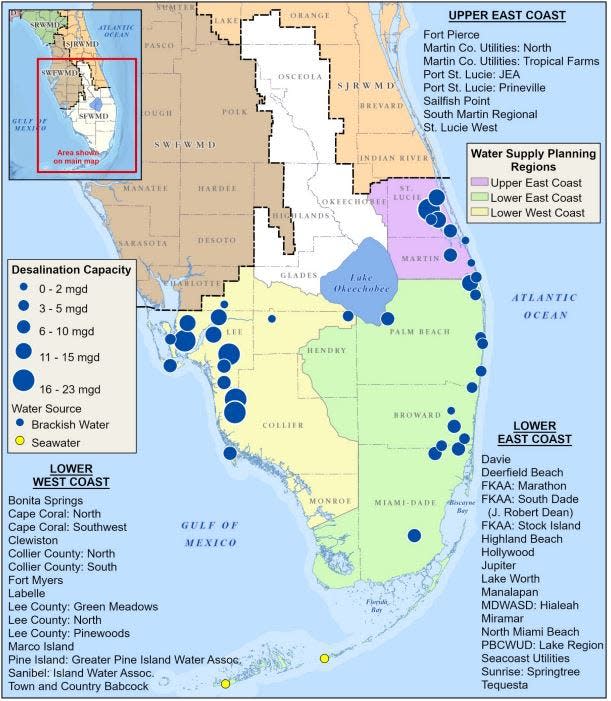
The city is requesting ultimately an allocation from the aquifer of 63.8 million gallons per day to augment the surface water supply.
That would make it the single biggest draw on the aquifer of 40 water treatment plants in the South Florida Water Management District (SFWMD) region that use the Floridan water. The district includes 16 counties from the upper Kissimmee chain of lakes to the Keys.
“It would be the largest desalinization plant in our district,” said Mark Elsner, water supply bureau chief about West Palm Beach’s proposal. “They will have to go through a series of analyses to make sure they are not going to impact other users.”
Century-old water supply system in West Palm Beach stressed by growth, weather
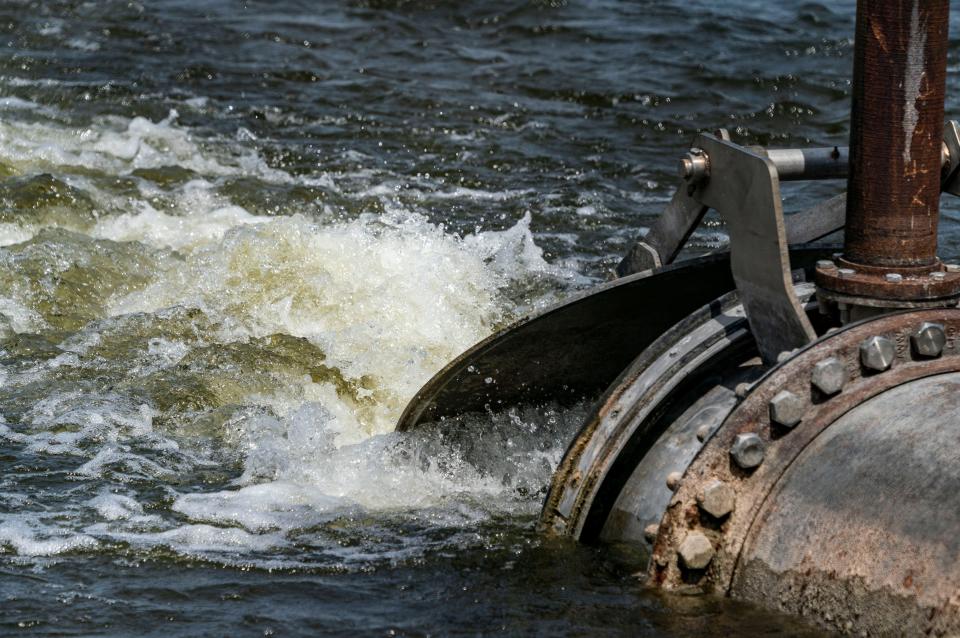
The City of West Palm Beach grew up around a water supply first tapped by railroad tycoon and hotelier Henry Flagler in the late 1890s to satiate his growing empire in Palm Beach. Its current water treatment plant on the shores of Clear Lake west of downtown West Palm Beach is in the same place it was more than a century ago.
With the city’s expansion, the water supply evolved to rely on Grassy Waters Preserve — a historic headwaters of the northern Everglades now buoyed by Lake Okeechobee.
James Sullivan, executive director of Florida Atlantic University's Harbor Branch Oceanographic Institute and a member of the state's Blue-Green Algae Task Force, said it’s not uncommon for large cities to rely on surface water such as lakes because they are easily accessible and, aside from drought years, replenish quickly.
Challenges in a warming world: Scientists say climate change will worsen these algae problems
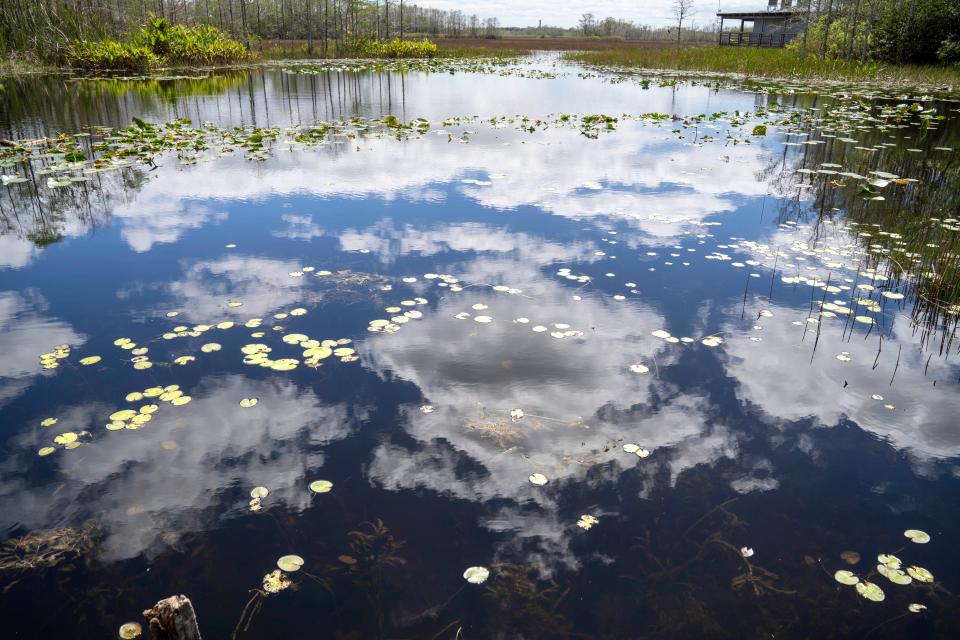
New York City is fed by three surface watersheds. According to the U.S. Geological Service, about 70% of freshwater used in the country in 2015 came from surface-water sources.
But surface water is susceptible to drought and contaminants from chemical-laden runoff.
“Surface water has plants and animals and bacteria; stuff that grows in it,” Sullivan said. “There are no animals or algae in the aquifer, it’s been kind of filtered and it’s out of the sunlight.”
Blue-green algae blooms in Lake Okeechobee can tax West Palm Beach water supply
Lake Okeechobee has long suffered blooms of cyanobacteria — commonly referred to as blue-green algae. West Palm Beach monitors for signs of the common microcystin toxin, which is known for producing smelly scab-like cakes on the water's surface.
When the microcystin toxin was detected in water coming from Lake Okeechobee in April 2021, West Palm Beach shut off the flow into Grassy Waters Preserve to protect it from infection.
A delayed rainy season that year meant Clear Lake became depleted without regular refills and cylindrospermopsis — a cyanobacteria that lingers unseen in the middle water column — was detected. It created the toxin cylindrospermopsin, which if consumed can cause headaches, nausea, bloody diarrhea, and in some cases, liver and kidney damage. The discovery led to a week-long water advisory that cautioned some residents, including children under 6, pregnant women, the elderly and people with liver conditions, against drinking the water.
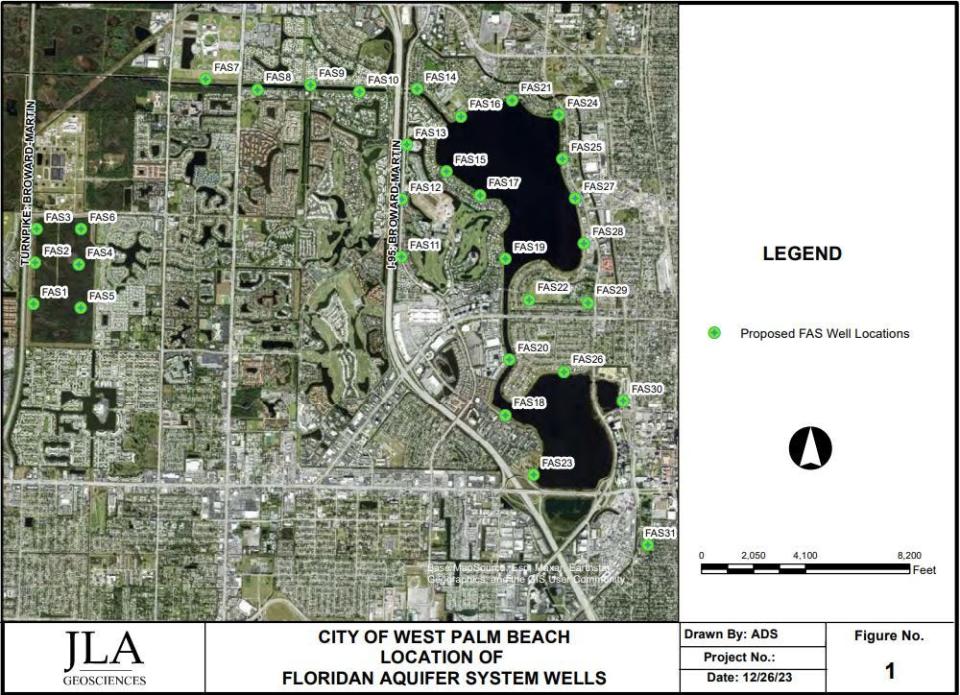
Algae tainted water in 2021: Algae task force hears from residents who say they were sickened by toxins in drinking water
“People think we are a water-rich state, but as far as freshwater, we can be at a deficit,” Sullivan said.
The city spent just over $63,000 to buy bottled water during the 2021 incident and ended up giving out nearly 336,000 bottles at distribution points throughout the city.
“The city understands that significant efforts are underway by various federal and state agencies to better manage Lake Okeechobee levels and improve water quality,” West Palm Beach officials wrote in their request to use the Floridan aquifer. “However, the city recognizes that it may take decades to show significant water quality improvements.”
In Florida, about 98% of the drinking water supply is from groundwater, according to a 2020 presentation given to the state's Blue-Green Algae Task Force by a Florida Department of Health toxicologist.
An estimated 6 million people in Palm Beach, Broward and Miami-Dade counties rely on the Biscayne Aquafer for water, Elsner said. The Biscayne Aquifer is shallower — about 150 feet deep — than the Floridan and has fresh water replenished by rainfall or Lake Okeechobee during drought.
But the Biscayne Aquifer is maxed out.
“When utilities want more water, they need to go deeper,” Elsner said.
The Floridan Aquifer is recharged by rainfall in Central and North Florida. It underlies the entire state into Georgia, Alabama and South Carolina, and is considered one of the most productive aquifers in the world.
There are 38 brackish water and two seawater desalinization plants in South Florida and the Treasure Coast that use the Floridan Aquifer.
The Seacoast Utility Authority, which provides water to about 96,000 people in Lake Park, North Palm Beach, Palm Beach Gardens and the south end of Juno Beach, uses reverse osmosis to treat water it draws from the aquifer.
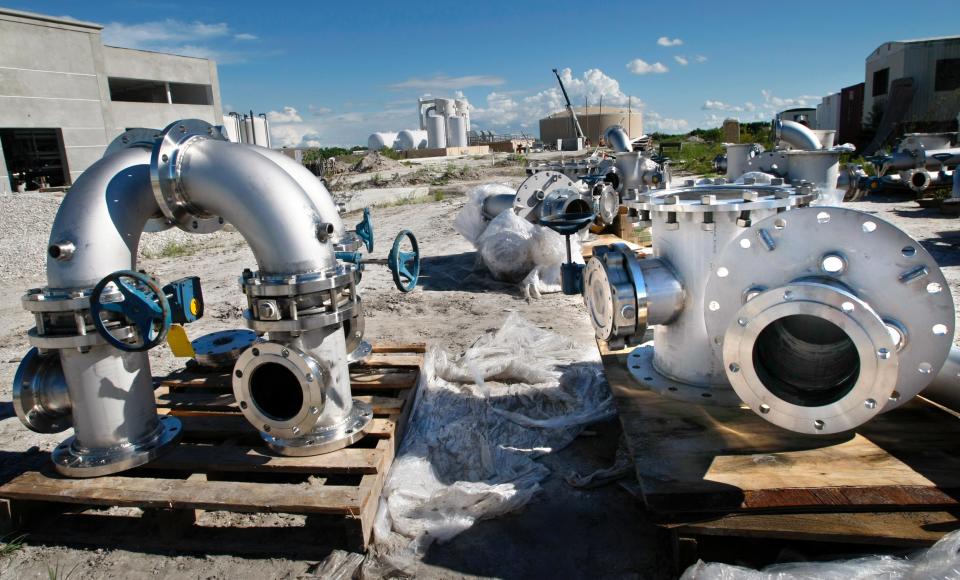
Following a significant drought in 2007-2008, the Lake Region Water Treatment Plant was built to tap into the Floridan Aquifer for the cities of Belle Glade, Pahokee and South Bay, which previously relied on Lake Okeechobee for water.
“That’s where things are headed,” Elsner said about tapping groundwater supplies.
West Palm Beach is hoping to get approval this year to use the Floridan Aquifer to supplement its supply. The goal is to be processing 10 million gallons per day within 3 to 5 years.
"You take water where you can get it, so having alternative supplies isn't a bad thing," Sullivan said. "You can't have a situation where a city the size of West Palm Beach suddenly doesn't have drinking water."
Kimberly Miller is a veteran journalist for The Palm Beach Post, part of the USA Today Network of Florida. She covers real estate and how growth affects South Florida's environment. Subscribe to The Dirt for a weekly real estate roundup. If you have news tips, please send them to kmiller@pbpost.com. Help support our local journalism, subscribe today.
This article originally appeared on Palm Beach Post: West Palm Beach, with its booming growth, is looking for more water

